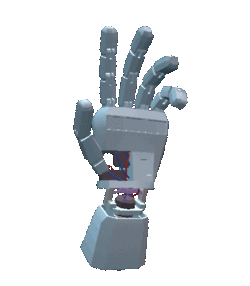STATE OF THE ART
This part of the project is about the information we researched before to start it and during it.
PREVIOUS INFORMATION
Before starting the project, we had to do some research to depart from a point of view. After a lot of information and similar, but not equal projects, we thought that the two following ones would be the ones from which we would get ideas:
The next one was a project of four students of the Olin college of Engineering in USA, it was a subject similar to the one for what we are doing this power glove. The aim of them was learning about subjects and helping people's lives.
POE Fall 2015: American Sign Language Interpreting Gloves
ANNABEL CONSILVIO, KELLI SHIMAZU, CESAR SANTANA, LOGAN SWEET
POE Fall 2015
The other one was a Final project of two mates from the Cornell University in Ithaca, USA . Their aim was to create a standarized glove hand that uses a machine learning algorithm to translate sign language into spoken English.
ECE 4760: Final Project :Sign Language Glove
Monica Lin(mjl256@cornell.edu), Roberto Villalba(rdv28@cornell.edu)
STANDARD HAND SIZE
Every person's hand is unique in size and shape, and we aimed to create a device that could provide reliable translations regardless of those differences.
In order to do a project that suits and it's useful to everyone, we've studied and researched information aboud hand sizes and shapes.
Nevertheless, glove size is determined by measuring the length and circumference of your hand. The largest measure determines your glove size. As usual, the way to determine your glove size is with your hand length.


HAND MOVEMENT AND PRECISION TRACKING
To analyse the capacity of the sensor to track the hand movement, we compare the full-scale range of the gyroscope and accelerometer with the cinematic equation of a hand motion.
The references about the hand data movement are of a study of the University of Malaga. They used people with body differences (age, height, weight, IMC) to standardize the results. The method to collect the information is with a mobile phone positioned in the arm.
The data is processed and filtered with a statistic software (SPSS) and then the results are the angular mobility and lineal acceleration of each axis during flexion and abduction movement.
-
Acceleration mobility of a human hand :

-
Working range of MPU 9250 : 1g = 9,81 m/s2

We can see that the work range of the device is able to collect all the hand movement, with the enough sensibility to detect each change correctly. The maximum range of acceleration of our arm is almost 2g, equivalent to the minimum range of the accelerometer.
About the gyroscope, we analyse the angular velocity, and we obtain an average of 1782.18 °/s in an extremely case, doubtful in that project but possible.
-
Calculations:


-
Conclusion:
The maximum is about 2000° every second, this gyroscope is able for this project.
SIGN LANGUAGE IN CATALAN
Sign language is a natural language of expression and gesture-spatial configuration and visual perception thanks to which deaf people can communicate with their social environment.
While oral language is based on communication through a vocal-auditory channel, sign language does so through a gesture-visual-spatial channel.
We've choosen the Sign Language in Catalan because it's our local language, and because we had found an stablished standard of it on the "Institut d'Estudis Catalans-IEC".

